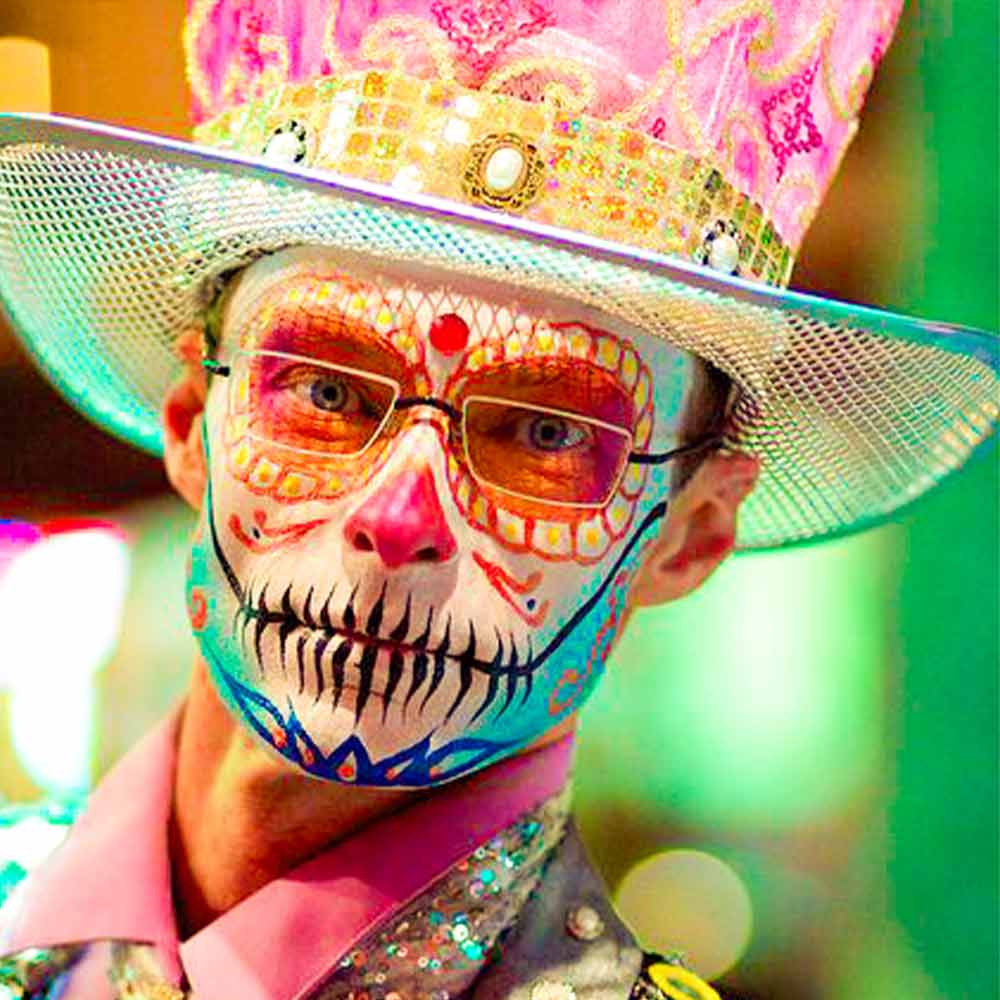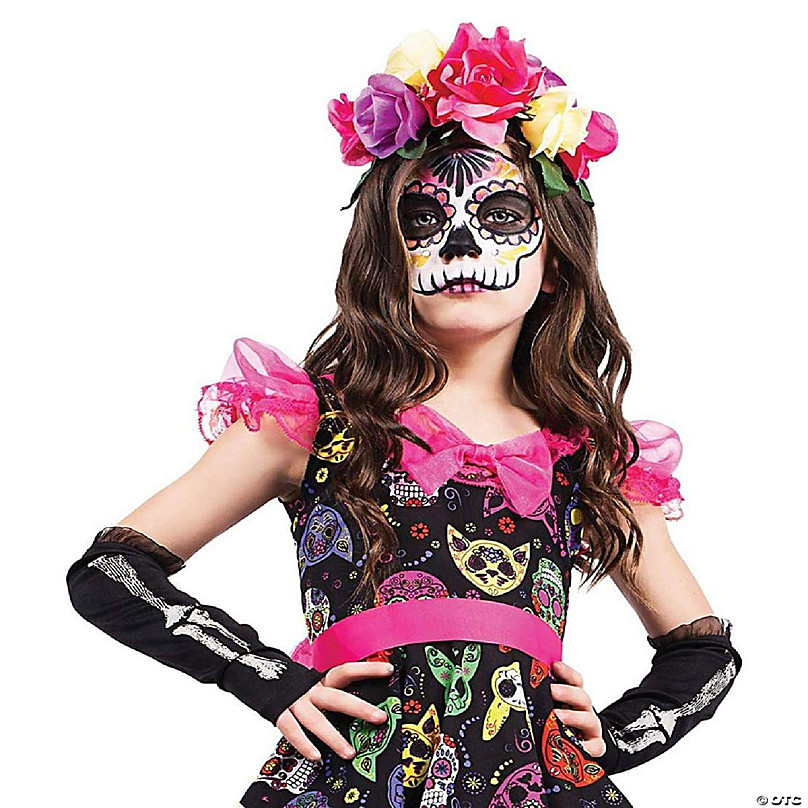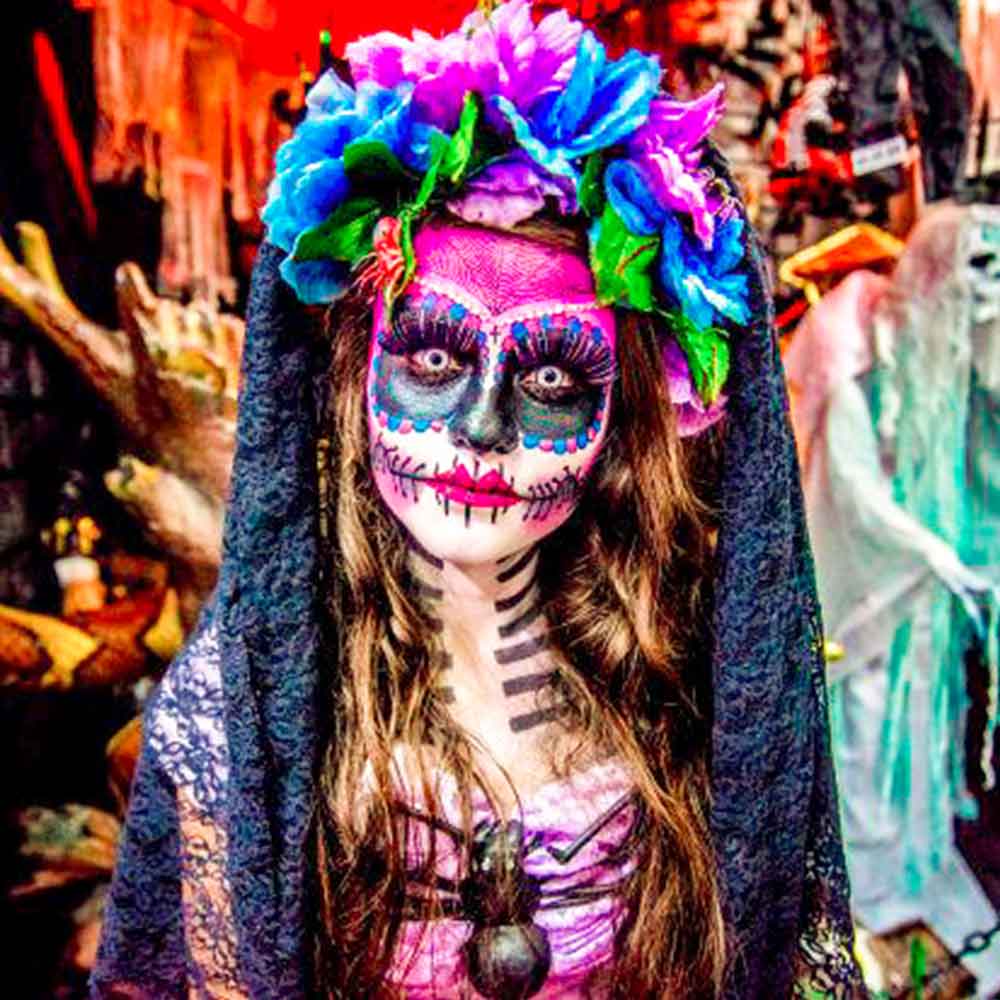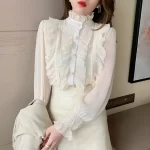Understanding the Significance of Day of the Dead Attire
The Cultural Importance of Day of the Dead Costumes
Day of the Dead, or Día de los Muertos, celebrates the lives of the departed, and costumes play a central role in the festivity. Traditional costumes often reflect the vibrancy of life with rich colors and intricate designs that signify the celebration rather than mourning. These costumes serve as a tribute to those who have passed and are a visual feast that transforms grief into a celebration of life. Choosing a costume for the Day of the Dead starts with understanding and respecting the cultural significance of this tradition.
Choosing Colors and Patterns with Meaning
Many Day of the Dead costumes feature particular colors, each with its own symbolism. Red symbolizes the blood of life, while white represents hope and purity. Black, though often associated with mourning, signifies the land of the dead. Gold or yellow can signify the sun and unity. Patterns are abundant, from floral to skull motifs, each symbolically woven into the costume to honor those no longer with us.

Designing Your Own Day of the Dead Costume
Inspiration from La Catrina
One iconic figure of the celebration is La Catrina, adorned with flowers and elaborate dresses. Originating from a zinc etching by José Guadalupe Posada, this elegantly dressed skeleton represents a happy afterlife and the equalizing of all in death. Many Day of the Dead costumes take inspiration from this character, incorporating ornate headpieces, lace, and face painting to mimic the calavera (skull) appearance. Drawing elements from La Catrina when creating a costume can instill a profound cultural resonance.
Integrating Personal Memories and Touches
Personalizing a Day of the Dead costume deepens the connection between celebrants and those they honor. Incorporating a departed loved one’s favorite colors or patterns can make a costume deeply personal and unique. Some may choose to integrate photographs or symbols that represent a hobby or passion of the loved one. This blending of traditional elements with personal touches delivers a heartfelt homage through the wearer’s attire.
The Art of Skull Face Painting
Basics of Calavera Makeup
Calavera, or sugar skull makeup, is a fundamental component in Day of the Dead celebrations. Start with a white base to mimic the skull, then add black around the eyes to create hollow-looking sockets. Intricate designs, such as flowers, spider webs, or other patterns, enhance the look. These designs can reflect personal significance or simply emulate the ornate work of traditional sugar skulls often made during the celebration.
Achieving a Professional Look with Simple Techniques
Even without professional training, one can still achieve an impressive calavera look. Practice makes perfect, so try your hand at face painting before the event. Use quality makeup to ensure the design lasts throughout the festivities. Start with simple designs and gradually incorporate more complexity. Temporary tattoos can also serve as a simple yet professional-looking alternative or enhancement to hand-drawn designs.

Accessorizing Your Costume for Authenticity
Adding Floral Accents
Floral elements are ever-present in Day of the Dead festivities. Crowns and garlands of marigolds, or cempasúchil, are common as they are believed to attract souls with their vibrant colors and scent. Incorporating artificial or fresh marigolds, roses, or other blossoms into headpieces or on clothing brightens costumes and ties them back to the celebration’s roots.
Incorporating Traditional Jewelry and Fabrics
Traditional jewelry like ornate necklaces and bracelets can accentuate the extravagance of Day of the Dead costumes. Lace fabrics, intricate embroidery, and shawls (rebozos) are clothing elements that can add layers of texture and authenticity to a costume. Each accessory chosen should complement the overall look while staying true to the joyous spirit of the occasion.
Practical Considerations for Costume Construction and Comfort
Balancing Detail with Wearability
While it’s tempting to include as much detail as possible, comfort and mobility are key. Ensure that you can move freely, especially if you’ll participate in parades or dances. Materials should be breathable, and face paint should be non-toxic and easy to remove. Pay attention to the fit and functionality of each piece of the costume, balancing decorative elements with wearability.
Preparing for Weather and Longevity
The Day of the Dead is celebrated outdoors, and costumes should cater to weather conditions. Light layers can help manage changing temperatures and long hours of celebration. Robust materials and secure fastenings can maintain the costume’s integrity throughout the day. Plan for touch-ups, especially with face paint, to keep your appearance fresh.
Cultivating an authentic Day of the Dead costume is a creative process intertwined with cultural respect and personal expression. By taking inspiration from traditional symbols and characters like La Catrina, integrating personal touches, and perfecting calavera makeup, your costume can honor this time-honored celebration with style and grace. Remember to accessorize appropriately and consider practical aspects like comfort and weather suitability. This balance of aesthetics, tradition, and practicality ensures that your Day of the Dead costume not only looks stunning but also enriches your connection to this profound day of remembrance.
Showcasing Your Costume during Day of the Dead Celebrations
Participating in Parades and Public Events
Day of the Dead is often marked by parades and public events, offering the perfect venue to showcase your costume. Take part in these celebrations to fully immerse yourself in the occasion. It’s not just about displaying your attire, it’s about embodying the spirit of remembrance and joining a community in honoring the cycle of life and death. Walking the streets in your carefully crafted costume, alongside music and dance, allows for a truly vibrant and collective expression of cultural appreciation.
Wearing your Day of the Dead costume can be a bridge to connect with others who celebrate the tradition. It can spark conversations about the stories behind personal touches in your garb, fostering a deeper understanding and connection within the community. This shared experience can lead to new friendships and memories, as well as a deeper respect for the cultural significance behind the festival and its practices.

Capturing the Day of the Dead Moments
Photographing Your Costume for Posterity
Documenting your Day of the Dead costume in photos ensures that the effort and creativity put into your ensemble are remembered. Take photos in settings that complement the celebration, like decorated altars (ofrendas) or at well-known festival venues. These images can serve as a reflection of personal growth and creativity, and as an homage to loved ones remembered on this special day.
Sharing Your Experience and Inspiring Others
By sharing your costume and celebration photos on social media or other platforms, you can inspire others to appreciate and participate in the Day of the Dead traditions. Use these channels to tell the stories behind your costume, the makeup, and the accessories. Your shared experience may educate others about the cultural significance, promote cross-cultural understanding, and encourage others to express their creativity in honoring those who have passed.
Reflecting and Honoring After the Celebrations
Reflecting on the Personal and Communal Impact
After participating in the Day of the Dead festivities, take time to reflect on the impact the traditions have had on you personally and on the community. Consider how your costume’s personal elements allowed you to honor those you’ve celebrated. Recognize how immersion in the community’s practices has perhaps given you a deeper appreciation for the cultural richness of this holiday.
The Continuity of Cultural Expression
Post-celebration, think about how you will maintain the spirit of Día de los Muertos throughout the year. The connections made and insights gained from participating in the tradition and crafting your costume can influence your daily life. Embrace the lessons of celebrating life and remembering the dead and let them inform how you approach remembrance moving forward. The creativity and cultural appreciation need not end with the festivities; instead, they can be a continued source of inspiration.
Creating a Day of the Dead costume is much more than fashioning a festive outfit; it’s an act of cultural appreciation, personal expression, remembrance, and connection. Participation in parades and public events brings the costume to life, while shared traditions create community connections. Documenting the experience and sharing it with others expands its reach and can inspire cultural respect and participation. And when the celebrations wind down, reflecting on the day’s personal significance and the enduring vibrancy of the culture ensures that the spirit of Día de los Muertos remains strong. Your costume embodies the memories of loved ones passed and enriches the tapestry of this centuries-old tradition.


